Richard Reti - The Artistic Genius
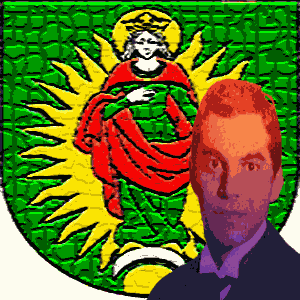
Richard Reti
He emerged as a top player after World War I and throughout the 1920s. He was a leading proponent of what Savielly Tartakower first coined as the Hypermodern School along with the aforementioned Tartakower and Aron Nimzowitsch.
These three and others played openings with an emphasis on preparing their forces to attack and destroy their opponent's center. They said that success in the destruction of the enemy center would see them a long way on the road to victory.
Young Richard
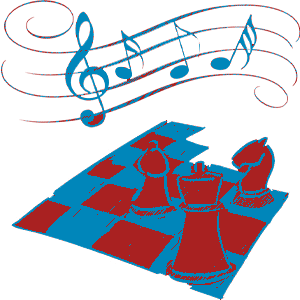
Richard Reti grew up surrounded by music and chess
Over the years they had moved around within central Europe, living in Serbia and Austria at different times. Samuel Reti was a doctor and his work took him to Vienna where he founded a medical practice.
They were a cultured family who enjoyed music and chess as did much of the Viennese middle class. Richard's mother and father would often play a game of chess in the evening with the two boys watching.
His First Game of Chess

Richard Reti played and won his first game of chess against his father when he was 6
Everyone was stunned when Richard not only knew the rules but, reminiscent of Capablanca and Morphy before him, proceeded to win the game. A second game followed immediately and Richard won that too.
For the next few years his chess was limited to beating his school friends. His passion for devising ingenious chess problems was evident when at the age of 12 a chess column printed a problem he had submitted to them.
He received this feedback from the editor: “Your problem is gratefully accepted and will be published in one of our next columns. And I wish to add that if it is really true that you are only 12 years of age, as you wrote, and nobody helped you with the problem, let me congratulate you wholeheartedly. This is quite an exceptional achievement, which should encourage you to continue your work in chess with all seriousness. Personal greetings, Gottschall.”
Visiting Carl Schlechter
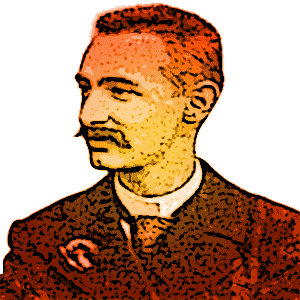
Richard Reti played the master Carl Schlechter (above) when he was 13
Rudolph, a few years older, set about bringing this about. He wrote to Carl Schlechter (who some years later would come within a whisker of winning the World Championship against Emanuel Lasker), the leading master in Vienna at that time. He told Schlechter that Richard was a great player and requested that he play him. Although unconvinced about the abilities of a 13 year old boy, Schlechter was an obliging character and agreed to play.
Rudolph and Richard went to Schlechter's house, not far from their own, and the two sat down to play. Richard lost in less than 10 moves. Schlechter said let's play again. In the second game the boy showed what he was made of. He gave Schlechter a much harder test and lost after more than an hour. “You have certainly given me some trouble”, the master told him. “For his age", he said to Rudolph, "this is certainly exceptional”. He turned back to Richard. “Where and with whom do you play?”. “In the Amateur Chess Club, in the second borough”, came the reply. “Well”, said Schlechter, “that’s fine, but I think you should become a member of the Wiener Schachklub”.
The Wiener Schachklub
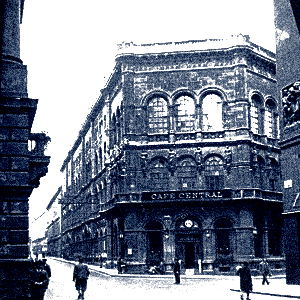
Richard Reti joined the Vienna Chess Club at the age of 13
Schlechter arranged for young Reti to be admitted to the club, the first player of such a tender age to be allowed to do so. Richard learned to his frustration that these masters did not play much chess at the club so his opportunities to test himself against them were limited.
They socialized at the club and only really played when a tournament came round. Richard also had school to occupy him. One great thing about being in the club was he now had access to the best chess books available along with the occasional game against his new illustrious friends.
Wild Card at Vienna 1908
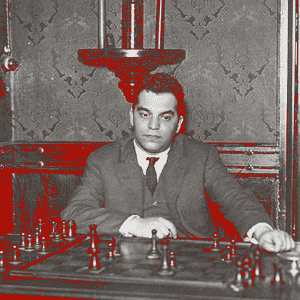
An inexperienced Richard Reti was thrown into an International Masters Tournament in 1908
A replacement was needed and Reti's name was put forward. It was true that he had shown promise in youth tournaments but he had not yet joined the ranks of the strongest masters. Some objected to his inclusion in such a prestigious tournament.
As it happened he did compete at Vienna 1908 and finished 20th and last, 4.5 points behind the German, Erich Cohen in 19th. He was the only player not to win a game. He did record three draws, the one against Czech champion, Oldrich Duras in the final round proving consequential to the outcome of the tournament.
Duras would have won the tournament outright with a win over Reti. The draw meant he shared 1st prize with the Hungarian, Geza Maroczy and Reti's old friend, Carl Schlechter of Austria, all on 14 points. Akiba Rubinstein, playing for the Russian Empire finish 4th on 13 points.
World War I
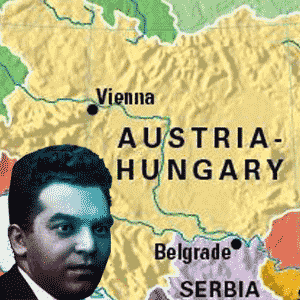
Richard Reti spent World War I posted on the border between the Austria-Hungarian Empire and Serbia
His chess showed visible improvements from his debut with 1909 Vienna Chess Club Winter Tournament and the 09/10 Trebitsch Memorial Tournament beginning an incremental upward trajectory through the decade leading up to the war.
Reti was always of delicate health and did not pass the medical for action in the trenches. Instead he was posted to a border post on the Austria-Hungarian Empire's border with Serbia where he had clerical duties.
Here he was unable to make progress with his mathematics doctorate. It did mean though he could work on his chess. Many of his superior officers enjoyed the game and they encouraged his development. They even allowed him leave to play in some tournaments. He gained recognition as a major force for the future with victory at Kosice 1918 ahead of Vidmar, Asztalos, Breyer, Grunfeld, Schlechter, Balla, Mieses, Foldes, Balogh, Brach and Havasi. Reti destroyed the field finishing 5 points clear of Vidmar in second place.
Choosing Chess Over Mathematics

Richard Reti faced a choice between maths and chess
Reti finished his course in mathematics at the university, but during the final preparations of his thesis disaster struck. He lost the 20 page document and it was never to be found. He was relying on this to gain his doctorate. It was a bitter blow that would always haunt him.
His earlier victory in Kosice had alerted many in chess to his great potential. The Dutch Chess Federation invited him to Amsterdam as a resident master there. Without his doctorate and with no prospects amid economic chaos in Vienna, this opportunity provided an escape.
It was originally only intended for a few months but things went well and he would remain there for several years. Reti would embark on a successful professional chess career.
A Decade of Chess Success
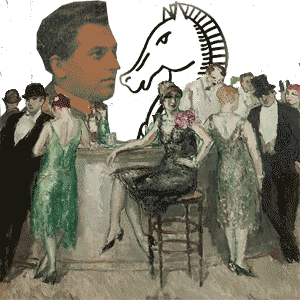
Richard Reti enjoyed much chess success during the Roaring Twenties
He won Gothenburg 1920 ahead of Rubinstein, Bogoljubov and Tarrasch in a world class field. In another interesting parallel with Capablanca, Tarrasch objected to Reti's worthiness in such a strong tournament before play began. Reti beat Tarrasch on his way to victory.
He was 5th at Bad Pistyan 1922 and 6th at London 1922. He won Teplitz Schoenau 1922 and 1924 Argentinian Championship. He beat Damian Reca 2-0 while in Buenos Aires.
He was 5th at New York 1924 behind Lasker, Capablanca, Alekhine and Marshall. It was here that he scored his famous win over Capablanca. He won Brataslava 1925 by 4 points and came in 6th at Marienbad 1925. He finished 7th at Moscow 1925. Here he met and married Rogneda Gorodetskaia. He was 5th at Berlin Tageblatt 1928. He died aged just 40 of scarlet fever in 1929.
That Game Against Capablanca
Reti - Capablanca, March 22nd 1924; Black resigns after 31.R1d5
The 11 competing masters were Emanuel Lasker of Germany, Jose Raul Capablanca of Cuba, Alexander Alekhine of the USSR, Frank Marshall of the United States, Richard Reti now playing for Czechoslovakia, Geza Maroczy of Hungary, Efim Bogoljubov of the USSR, Savielly Tartakower of Poland, Fred Yates of England, Edward Lasker of the United States and David Janowski of France.
Reti scored his memorable win in Round 5. It was Capablanca's first competitive loss in 8 years of competition. Capablanca was known as The Human Chess Machine because he was by now considered almost unbeatable. Reti eventually finished a very creditable 5th overall. Reti vs Capablanca, March 22nd, 1924.
Reti's Hypermodernism
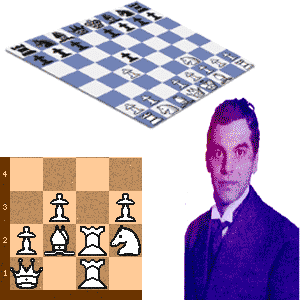
Richard Reti was a major proponent of the Hypermodernism style
He has an opening named after him. The Reti Opening, 1.Nf3 d5 2.c4 contains these ideas in it's lines. Reti along with Nimzowitsch, Tartakower and others popularized these ideas and many openings previously scorned, such as the King's Indian Defense (and all Indian Systems), the Modern Defense, Alekhine Defense, Pirc Defense, Catalan Opening, Reti Opening, King's Indian Attack, the English Opening and others were suddenly widely played by top players. New lines were found and deeply analyzed, changing the face of chess.
Reti's Chess Theory
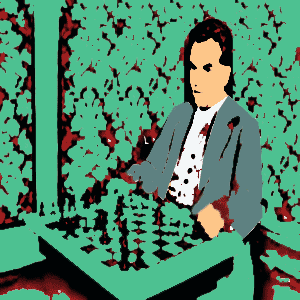
Richard Reti had his own theory on chess
I well remember how Richard tried to explain to me the philosophy behind it in approximately the following way:
The masters dominating the chess scene of today and the generation preceding them, he said, had developed the game to a point of highest thinkable logic and reason. They established the era, as it were, of common sense in chess. Broadly speaking, the idea was that the player had the best chance to win if his chessmen dominated the most terrain in the attack.
“I myself”, said Richard, “was first entirely convinced of this idea, firmly believing that the chance of winning depended solely on one’s capacity for ever more rational, natural thinking. If this were correct, the height of chess as an art would already have been reached, and progress would be thinkable only through an increase in degree – just as an athlete sets a new record by lifting a heavier weight than his predecessor.
Yet in probing deeper into the mystery of the 64 squares it gradually occurred to me that certain moves and systems of development which did not open more terrain for one’s game or rescue one from the opponent’s attack could nevertheless, if properly handled, finally lead to a superior position. In other words, there is often a higher, more complex logic hidden in chess than in the obvious logic of common sense. Certain moves which logically might seem bizarre, even abstruse, may sometimes still prove more effective.”
Legacy of Reti
The famous Reti Endgame Study published in 1921, how does White to play magically manage to draw?
He confided in his brother that while he recognized the commercial pressure on his fellow masters to play simply to win, he found it regrettable. Chess remained a hobby and a labor of love to him even after he was forced to adopt it as his main profession.
He might have been the most creative player ever. Alexander Alekhine: “Richard Reti was the only chess player who regularly amazed us in games with his unexpected designs.”The boy who received the letter from a well known chess column praising his composition continued to devise them throughout his life. He came up with maybe the most famous one ever composed: Reti Endgame Study, 1921.
Moving On
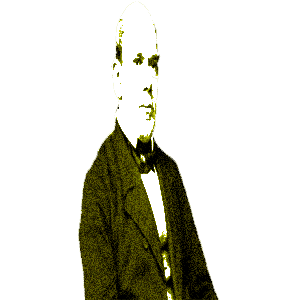
Adolf Anderssen
He and his contemporaries were the generations who uncovered many of the secrets of chess. Armed with just a chessboard and time. There were many other great players that warrant a mention here. Paulsen, Maroczy, Schlechter, Marshall, Pillsbury, Bernstein and many more were remarkably gifted like the 12 players in this section.
The 70-80 year era from Adolf Anderssen through to the generation of Reti was an era of tumultuous change in the game. The Romantic Era was usurped by the Classical Era. Then the Hypermodern School came along and while it did not displace Classicalism, it certainly made it's mark. The succeeding mode of play was perhaps a hybrid of Classicalism and Hypermodernism.






